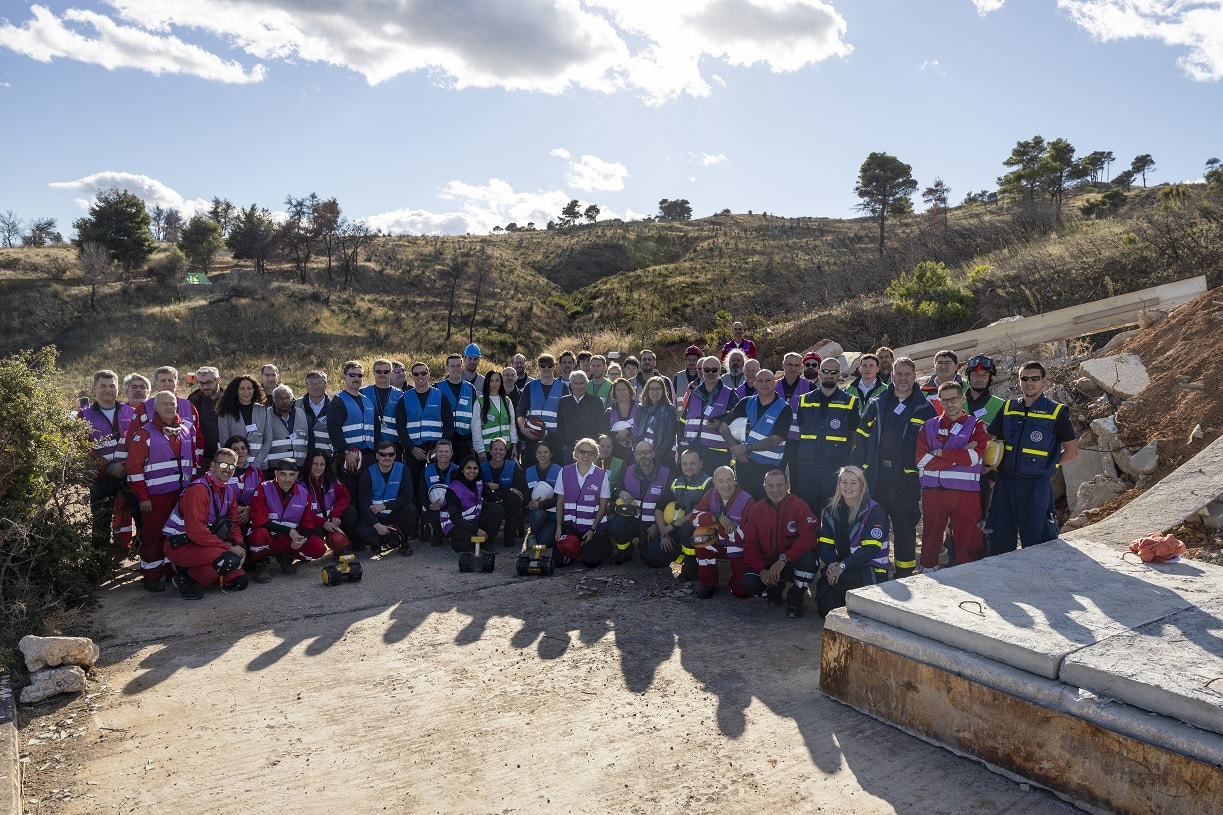Large Scale Field Test, 20- 25 November 2022, Afidnes, Greece
On November 20-25, 2022 the final full-scale open-field pilot for the CURSOR project (EU H2020) took place at the ATC training facilities of the Hellenic Rescue Team of Attica (HRTA) in Athens, Greece. The CURSOR project is focused on developing next-generation technologies for Urban Search and Rescue (USAR) missions, specifically for victims trapped detection deep inside collapsed structures and disaster sites. HRTA was the host and organizer of the piloting activities throughout the week, from pre- and post-mission briefing meetings off-site to full open-field multi-team camp deployment on-site in rural mountainous terrain under realistic multi-day mission conditions.
The goal of this final pilot was to demonstrate the complete and integrated CURSOR toolkit in various USAR scenarios and in almost all INSARAG-based deployment protocols and documentation (ASR2-ASR4). The toolkit includes a drone fleet of several types of drones for wide-area search and mapping, dynamic 3-D modelling of worksites, 24/7 tethered aerial platform for the Command Center, as well as a specially designed platform for aerial delivery of UGVs at selected locations in the worksite. The UGVs (“SMURF”) are also a custom robotic design specifically focused on deep penetration inside rubble piles and debris, equipped with visual/thermal cameras, audio link, LED light, precise indoor navigation and a “SNIFFER”, which is a novel chemical sensor capable of detecting volatile compounds of live and deceased victims, as well as distinguishing between human and animal sources. Additionally, a new generation of digital geophones are deployed outside the disaster site and provides 3-D detection of minute vibrations by live victims, while at the same time it can employ customized dynamic signal filtering for selective noise suppression, like on-site power generators that can be running whilst the search is active.
All these sensing data are managed by a compact field communications suite, deployed on-site by the First Responder (FR) team as needed, while the decision-making is supported by an information fusion service (“EXPER”) running transparently in the back-end of the platform. The critical operational-tactical link between the deployed FR teams/assets and the Command Center is maintained by an integrated Common Operational Picture (COP) platform, running in parallel on both ends with INSARAG-compatible procedures and with two-way near-real-time annotation updates for situational awareness, FR/assets deployment and victim detection profiles (probability estimation).
Besides having a realistic open-field mission deployment hosting almost 90 people of FRs, technical teams, external observers, USAR domain experts and media correspondents, the overall deployment included three distinct main locations with distributed technical stations and a remote USAR Coordination Cell (UCC). It also employed two dedicated landing zones, safe air corridors for drones and three indoor / confined locations for victim search, under rubble and with near-zero visibility conditions, simulating a very realistic “hot zone”. The final pilot tested the CURSOR toolkit and its next-generation functionalities to the extreme, from night drone flights to airdrops of UGVs under windy raining conditions.
The next scheduled event for the CURSOR toolkit is in Germany, where the final event demonstration will take place on February 7-8, 2023, shortly before the project concludes in February 2023.








